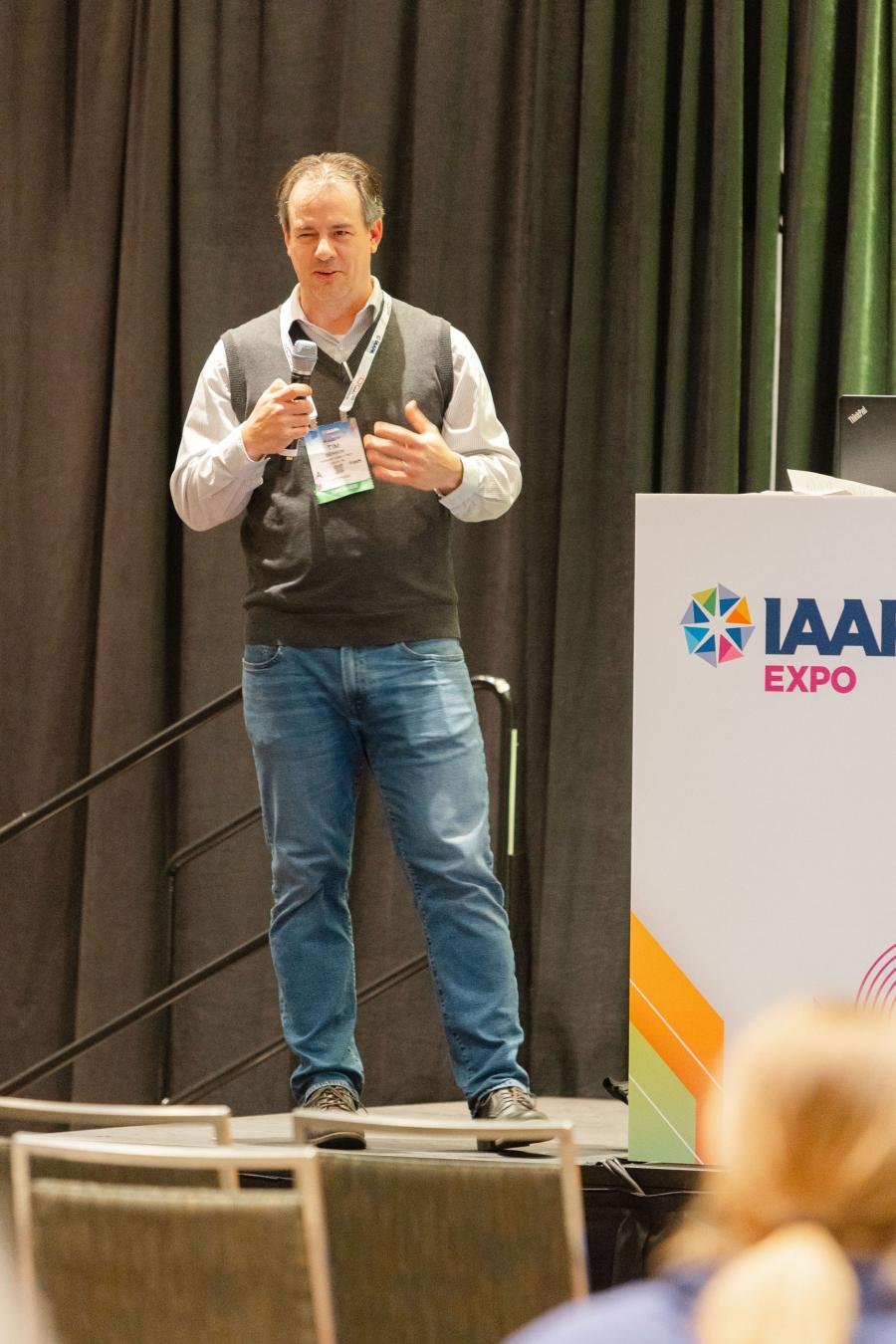Businesses in the attractions industry know that happy employees are crucial to success. Beyond equitable wages, what contributes to exceptional employees? That was the focus of the “Breaking Down the Silos 2.0” EDUSession, which explored ways to ensure employee teams feel heard and seen, plus some crucial aspects of employee management.
Brandon Cole, general manager of Sandbox VR Louisville, says one of the most important elements in attaining happy employees is inclusion—making them feel like they’re a valuable part of the team. He reveals that a good way to understand this is by watching animals.
“Animals have a unique feature to their existence—they must do certain things to survive,” explains Cole. “They can’t just choose to do these things. By looking at what animals do and how they’re hard-wired, it can teach us a lot about working together.”
He says if you’ve ever watched a flock of birds, like geese, flying in a V formation, you’ll notice that they rotate the leader, because it’s tough to fly in front. So all of the geese in that formation get to play the leader role.
“Let’s also look at hyenas, one of the most successful group hunters,” he says. “They rival humans in the size of their prefrontal cortex. They are amazing communicators, and that leads to the success in their hunts. A group working together can usually do a project better than each person working by themselves.”
Another component of having happy employees is giving them the opportunity to have input. Tina Griffith, assistant general manager of SSA Group/The Dallas Zoo, asserts that to have happy employees who provide effective input, you must first build trust.
She quotes writer and public speaker Stephen M.R. Covey, who says, “Without trust, we truly don’t collaborate. It is trust that transforms a group of people into a team.” Griffith says you can get input from team members in numerous ways, including one-on-one conversations, surveys, texts, emails, private or conference calls, lunch, gestures, and body language.
She states that some of the most effective methods to get employee input include employee feedback surveys, one-on-one performance review meetings, onboarding and offboarding interviews, suggestion boxes, and casual conversations.
“Make sure to get feedback from employees leaving your company,” Griffith says, regarding the importance of conducting offboarding interviews when an employee exits your workforce. “Because they are sometimes not happy and will be honest with you about what’s wrong.”
But Griffith points out that it’s not enough just to collect this feedback from employees—it must be utilized and acted upon. She says it should be acknowledged, addressed, and used to create a game plan of action, and adds, “If someone wonders if they are being seen and heard, the answer is YES!”
According to Tim Benson, COO of the YMCA Fremont in Nebraska, the best way to utilize feedback is by being intentional. “Don’t ask for feedback from staff members that you do not use,” he says.
Benson mentions different ways you can express this intentionality through one-on-one employee meetings, team huddles, coaching, and leadership lunches. One of the best techniques is by specifically acknowledging contributions from individual employees and employee teams.
Finally, don’t be high and mighty when you encounter resistance from employees. If you call for a meeting and an employee says they don’t wish to go, you need to be able to explain why you’re having the meeting and why it’s valuable. When you have a meeting, identify its goal, identify the tools that will be utilized to achieve it, evaluate the process, and then repeat it.


